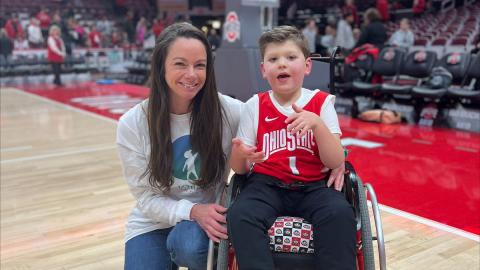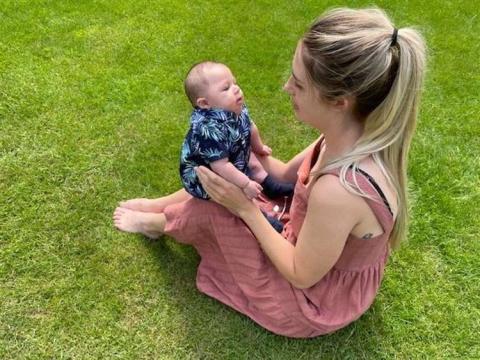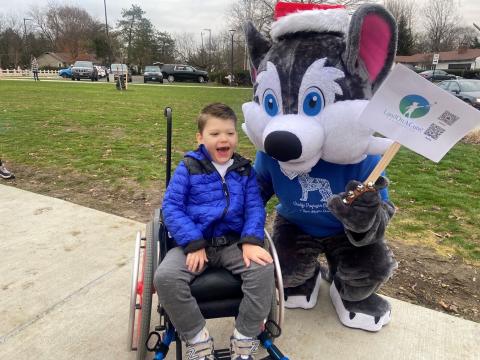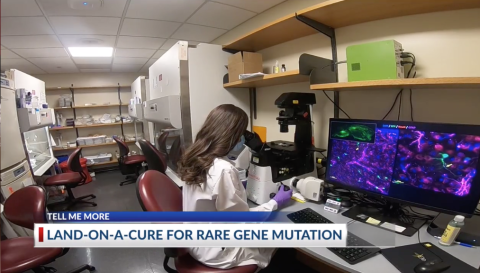TBCD FAQ
What is TBCD genetic disorder?
TBCD is a rare genetic disorder that has been classified both as a leukodystrophy and an atypical form of SMA in medical literature. It inhibits tubulin folding cofactor D, which prevents the body from creating myelin effectively. It was recently discovered that there appears to be two main subtypes of TBCD: progressive TBCD and non-progressive TBCD.
TBCD lifespan
No person has a set expiration date. While most children with TBCD pass away before their fifth birthday, people with TBCD as old as in their 30's are in our community. Prognosis will vary depending on the individual gene mutation and its location on the gene.
What are the symptoms of TBCD?
Early warning symptoms:
- Global developmental delay
- Hypotonia
- Dysphagia
- Difficulty feeding
- Vomiting
- Limited or no crying
- Pale optic nerves
- Thin corpus callosum
- Seizures
- Diffuse white matter atrophy
- Delayed myelination
Progressive symptoms:
- Loss of acquired skills
- Loss of purposeful movement
- Blindness
- Increasing white matter atrophy
Is there a treatment or cure for TBCD?
Currently there is no treatment or cure for TBCD. However, some medications may improve symptoms and increase quality of life. The TBCD community is pursuing multiple treatment avenues, including drug screening and gene therapy. To learn more, visit our Research Initiatives page.
Are there any doctors who specialize in TBCD?
We recommend contacting Dr. Margie Ream at Nationwide Children's leukodystrophy clinic. Make sure to mention that you are working with Dr. Bradbury's TBCD cohort. She has been treating much of our community and is working directly with our research team toward gene therapy. Her interdisciplinary team specializes in rare brain atrophy disorders and is extremely helpful.
If you would like an introduction, please contact us and we will put you directly in touch. This will likely be easier than navigating central scheduling at a large research hospital.
How is TBCD diagnosed?
While the presentation of specific symptoms may cause suspicion of TBCD, this rare genetic disorder is generally only diagnosed by a full exome genetic panel, unless there is a known family history.
How many people have TBCD?
While there are currently fewer than 50 documented cases of TBCD, new families are being diagnosed and finding our community regularly. With full exome becoming more accessible, we expect to find many more affected people. We hope to make contact with all affected families to strengthen our community and data.
Will TBCD show up on carrier screenings?
No. Currently, TBCD genetic disorder does not appear on any general commercial carrier screening panels. However, if you suspect that you may be a carrier, you can request that your genetic counselor screen you and your reproductive partner for your TBCD carrier status.
I'm a carrier for TBCD. Will my child be affected?
TBCD is a recessive genetic condition, so both you and your reproductive partner must be carriers to have an affected child. Carriers have a 1/4 chance of each child they bear being affected with TBCD. Embryonic testing can be done to test for TBCD using IVF, and prenatal testing can be done via amniocentesis or CVS.
I think my child may have TBCD. What should I do?
Don't "wait and see". Genetic testing panels are a lengthy process, and results can take months to arrive. Contact a geneticist and a neurologist, and ask for a full exome and an MRI. You will likely initially be offered a microarray. This test can take as long as a month to result, and will not find TBCD or other rare conditions. Insist upon a full exome.





